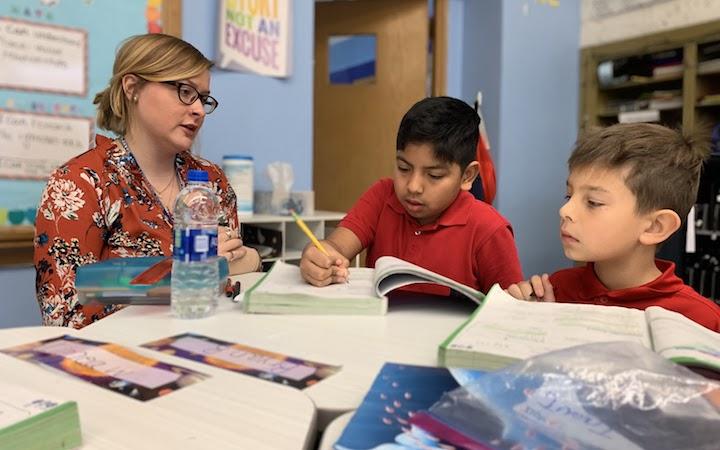You finish a class and think to yourself, "Wow! What a wonderful lesson. I can't wait to grade these exit tickets."
However, after grading, you find a handful of your students ROCKED the lesson—but a group of students completely misunderstood the concept. How will you make sure these students don't fall behind on future lessons?
Reteaching small groups of students is an effective way to ensure students receive instruction that targets their misconceptions.
When considering reteaching as a strategy to personalize learning, one of the most natural questions is, "How is reteaching different from remediation?"
Remediation is the strategy used to fill in the gaps that students are missing. These gaps could have been created earlier in the year, or they could be holdovers from previous years in school.
Reteaching allows you to get a closer look at potential gaps immediately after teaching an objective. Data-driven reteaching lets you pinpoint precisely where student misconceptions are occurring and allows you to reteach parts of the lesson that address the area of concern. Essentially, a reteach gives students extra scaffolding to reach the final objective.
Exit Ticket Analysis
The first step to conducting a great reteach is looking at the data. (Frequent readers know I have a strong love for data!)
All great teachers analyze their exit ticket data and decide which students need help with the lesson. When conducting a reteach, it is valuable to take a close look at students who did not master the lesson. When analyzing their data, ask yourself the following questions:
Are my students getting similar items wrong?
Look for trends in student answers. If students are getting the same questions wrong, there is an underlying reason. For example, if you are teaching a lesson on finding key details, and a group of students is missing the question on finding details in the captions of pictures, then you know that your reteach will need to focus on looking for key details in multiple places in a text.
If students are getting similar questions wrong, are they giving the same answers?
Once you find the question that students misunderstood, look at the responses to this question. Are students giving similar answers? Or do their answer choices following a particular pattern? In our next example, if students are taking a math test on order of operations, you notice that a group of students is getting one particular question wrong. When you look closer, they all happen to get the same or a very similar answer. After uncovering this interesting trend, you can begin to consider the last step.
What missteps did a student need to take to get to the wrong answer?
There is likely a pattern amongst your students who answered incorrectly. A student or group of students made an error on the exit ticket because they misunderstood a concept you taught. Using information, like scratch work, from the exit ticket, you can begin to see where students miscalculated or misunderstood the lesson's objective.
Create a New Objective
Based on the analysis of the exit ticket data, what new objective you can create? If your students didn't understand your lesson the first time, consider revising the objective to address their misconception. For example, the original objective is retelling a story using three key details. In their exit ticket, students who didn't master the lesson shared three things that happened at the beginning of the story. With this example, the teacher should reconsider re-writing the new objective to retell the story using three key details from the beginning, middle, and end of the story. Finally, to keep the learning fresh and relevant for your students, we recommended pulling students for a reteach within 48 hours of the initial lesson.
If your reteach is successful, you can expect to review your exit tickets from your reteach and find that all your students ROCKED the lesson. In a blended-learning classroom, small-group reteach lessons are vital because they provide equity to students. With this model, the teacher catches student misconceptions early to limit the number of educational gaps that could accumulate throughout a student's academic career.
Subscribe to get more blended-learning resources and updates!
 Alliance for Catholic Education
Alliance for Catholic Education
